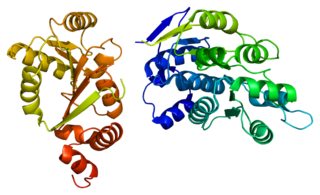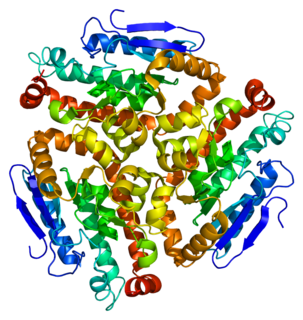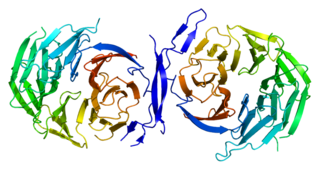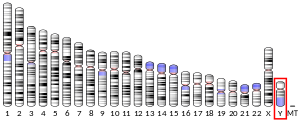
Minor histocompatibility antigen are receptors on the cellular surface of donated organs that are known to give an immunological response in some organ transplants. They cause problems of rejection less frequently than those of the major histocompatibility complex (MHC). Minor histocompatibility antigens (MiHAs) are diverse, short segments of proteins and are referred to as peptides. These peptides are normally around 9-12 amino acids in length and are bound to both the major histocompatibility complex (MHC) class I and class II proteins. Peptide sequences can differ among individuals and these differences arise from SNPs in the coding region of genes, gene deletions, frameshift mutations, or insertions. About a third of the characterized MiHAs come from the Y chromosome. The proteins are composed of a single immunogenic HLA allele. Prior to becoming a short peptide sequence, the proteins expressed by these polymorphic or diverse genes need to be digested in the proteasome into shorter peptides. These endogenous or self peptides are then transported into the endoplasmic reticulum with a peptide transporter pump called TAP where they encounter and bind to the MHC class I molecule. This contrasts with MHC class II molecules's antigens which are peptides derived from phagocytosis/endocytosis and molecular degradation of non-self entities' proteins, usually by antigen-presenting cells. MiHA antigens are either ubiquitously expressed in most tissue like skin and intestines or restrictively expressed in the immune cells.

Runt-related transcription factor 3 is a protein that in humans is encoded by the RUNX3 gene.

Tyrosinase-related protein 1, also known as TYRP1, is an enzyme which in humans is encoded by the TYRP1 gene.

Transducin-like enhancer protein 1 is a protein that in humans is encoded by the TLE1 gene.

Fos-related antigen 1 (FRA1) is a protein that in humans is encoded by the FOSL1 gene.

Hematopoietically-expressed homeobox protein HHEX is a protein that in humans is encoded by the HHEX gene and also known as Proline Rich Homeodomain protein PRH.

Interferon-induced protein with tetratricopeptide repeats 1 is a protein that in humans is encoded by the IFIT1 gene.

Lysine-specific demethylase 5D is an enzyme that in humans is encoded by the KDM5D gene. KDM5D belongs to the alpha-ketoglutarate-dependent hydroxylases superfamily.

Thymosin beta-4, Y-chromosomal is a protein that in humans is encoded by the TMSB4Y gene.

Guanine nucleotide-binding protein G(t) subunit alpha-2 is a protein that in humans is encoded by the GNAT2 gene.

Guanine nucleotide-binding protein G(t) subunit alpha-1 is a protein that in humans is encoded by the GNAT1 gene.

Transducin-like enhancer protein 2 is a protein that in humans is encoded by the TLE2 gene.

Transducin-like enhancer protein 3 is a protein that in humans is encoded by the TLE3 gene.

ATP-dependent RNA helicase DDX3Y is an enzyme that in humans is encoded by the DDX3Y gene.

Testis-specific chromodomain protein Y 1 is a protein that in humans is encoded by the CDY1 gene.

Transcription cofactor HES-6 is a protein that in humans is encoded by the HES6 gene.

Lysine-specific demethylase 6A also known as Ubiquitously transcribed tetratricopeptide repeat, X chromosome (UTX), is a protein which in humans is encoded by the KDM6A gene. It belongs to the 2-oxoglutarate (2OG)-dependent dioxygenase superfamily.

Transducin-like enhancer protein 4 is a protein that in humans is encoded by the TLE4 gene.

Tetratricopeptide repeat protein 3 is a protein that in humans is encoded by the TTC3 gene.

Eukaryotic translation initiation factor 1A, Y-chromosomal is a protein that in humans is encoded by the EIF1AY gene.























